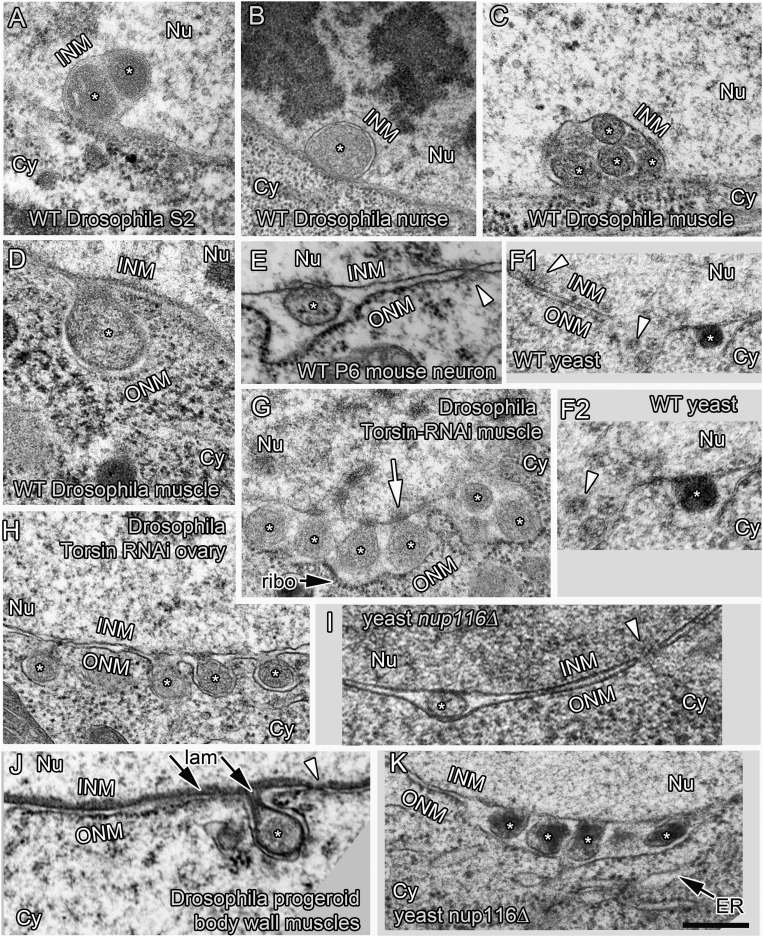Our official English website, www.x-mol.net, welcomes your
feedback! (Note: you will need to create a separate account there.)
Getting mRNA-Containing Ribonucleoprotein Granules Out of a Nuclear Back Door.
Neuron ( IF 14.7 ) Pub Date : 2017-Nov-01 , DOI: 10.1016/j.neuron.2017.10.020 Anup Parchure , Mary Munson , Vivian Budnik
Neuron ( IF 14.7 ) Pub Date : 2017-Nov-01 , DOI: 10.1016/j.neuron.2017.10.020 Anup Parchure , Mary Munson , Vivian Budnik

|
A pivotal feature of long-lasting synaptic plasticity is the localization of RNAs and the protein synthesis machinery at synaptic sites. How and where ribonucleoprotein (RNP) transport granules that support this synthetic activity are formed is of fundamental importance. The prevailing model poses that the nuclear pore complex (NPC) is the sole gatekeeper for transit of cellular material in and out of the nucleus. However, insights from the nuclear assembly of large viral capsids highlight a back door route for nuclear escape, a process referred to nuclear envelope (NE) budding. Recent studies indicate that NE budding might be an endogenous cellular process for the nuclear export of very large RNPs and protein aggregates. In Drosophila, this mechanism is required for synaptic plasticity, but its role may extend beyond the nervous system, in tissues where local changes in translation are required. Here we discuss these recent findings and a potential relationship between NE budding and the NPC.
中文翻译:

从核后门获得含mRNA的核糖核蛋白颗粒。
持久的突触可塑性的关键特征是RNA的定位和蛋白质合成机制在突触位点。形成支持这种合成活性的核糖核蛋白(RNP)转运颗粒的方式和位置至关重要。流行的模型提出,核孔复合体(NPC)是细胞物质进出核内的唯一看门人。但是,来自大型病毒衣壳的核大会的见解突出了核逃逸的后门路线,这一过程称为核包膜(NE)萌芽。最近的研究表明,NE出芽可能是非常大的RNP和蛋白质聚集体的核输出的内源性细胞过程。在果蝇中,这种机制是突触可塑性所必需的,但其作用可能会扩展到神经系统之外,在需要局部翻译变化的组织中。在这里,我们讨论这些最新发现以及NE萌芽和NPC之间的潜在关系。
更新日期:2017-11-01
中文翻译:

从核后门获得含mRNA的核糖核蛋白颗粒。
持久的突触可塑性的关键特征是RNA的定位和蛋白质合成机制在突触位点。形成支持这种合成活性的核糖核蛋白(RNP)转运颗粒的方式和位置至关重要。流行的模型提出,核孔复合体(NPC)是细胞物质进出核内的唯一看门人。但是,来自大型病毒衣壳的核大会的见解突出了核逃逸的后门路线,这一过程称为核包膜(NE)萌芽。最近的研究表明,NE出芽可能是非常大的RNP和蛋白质聚集体的核输出的内源性细胞过程。在果蝇中,这种机制是突触可塑性所必需的,但其作用可能会扩展到神经系统之外,在需要局部翻译变化的组织中。在这里,我们讨论这些最新发现以及NE萌芽和NPC之间的潜在关系。










































 京公网安备 11010802027423号
京公网安备 11010802027423号